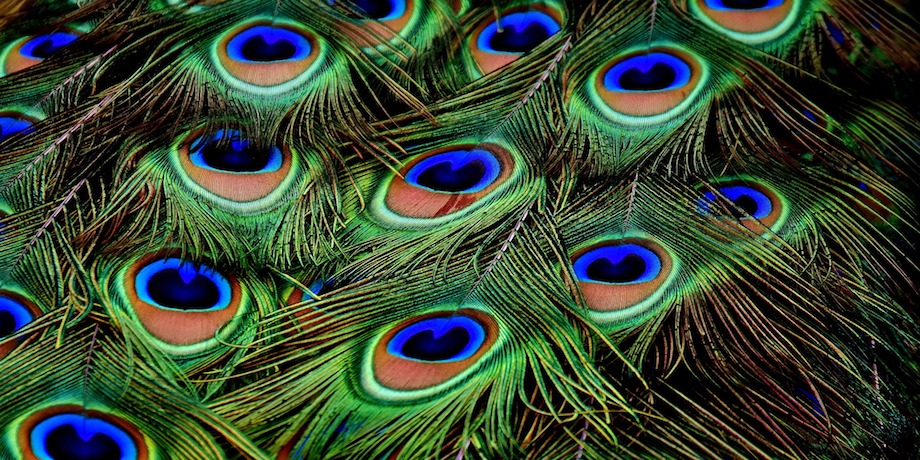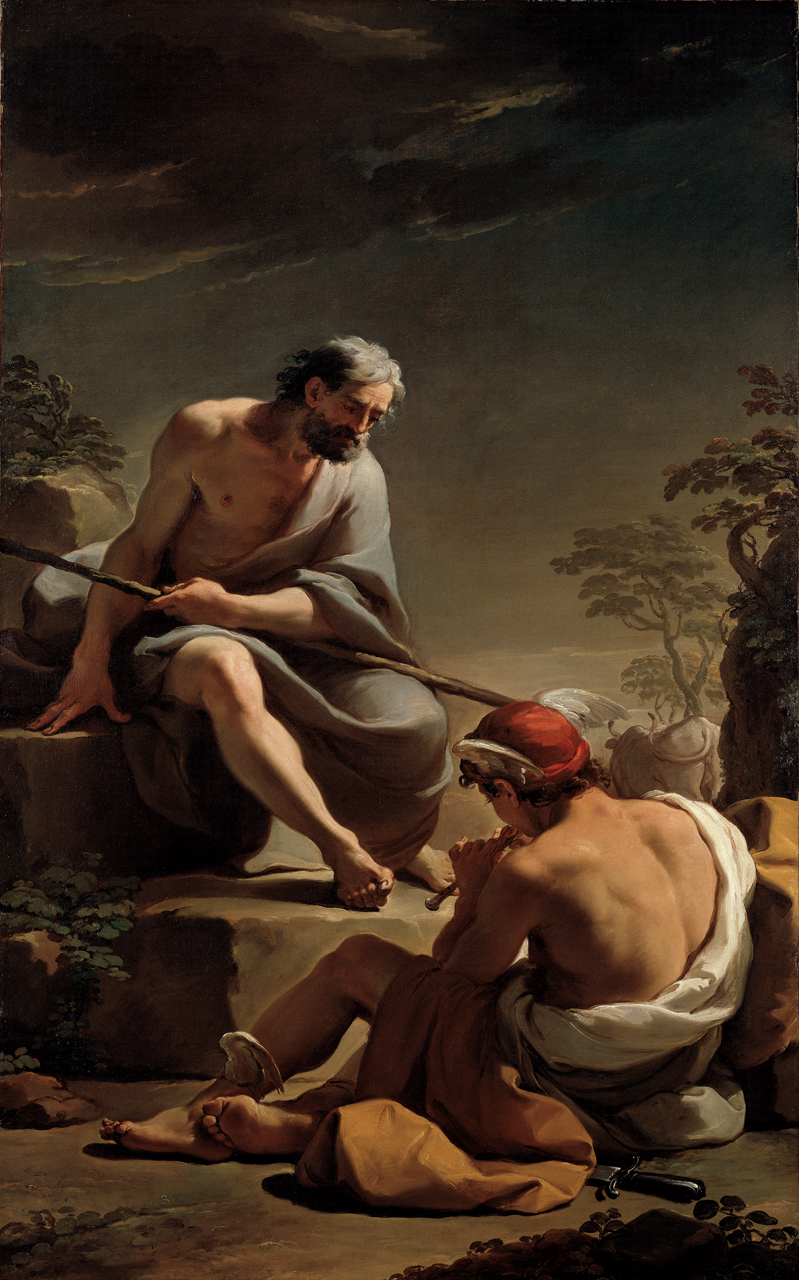6.8: Story- The Story of Io
- Page ID
- 47178

The Story of Io
Adapted from Old Greek Stories by James Baldwin, $\ccpd$
In the town of Argos there lived a maiden named Io. She was so pretty and good that all who knew her loved her and said that there was no one like her in the whole world. When Jupiter, in his home in the clouds, heard of her, he came down to Argos to see her. She pleased him so much, and was so kind and wise, that he came back the next day and the next and the next; eventually he stayed in Argos all the time so that he might be near her. She did not know who he was but thought that he was a prince from some remote land; for he came disguised as a young man and did not look like the great king of earth and sky that he was.
But Juno, the queen who lived with Jupiter and shared his throne in the clouds, did not love Io at all. When she heard why Jupiter stayed from home so long, she made up her mind to do the pretty girl all the harm that she could; and one day she went down to Argos to see what could be done.
Jupiter saw Juno while she was yet a great way off, and he knew why she had come. So, to save Io from her, he changed the maiden to a white cow. He thought that when Juno had gone back home, it would not be hard to give Io her own form again. But when the queen saw the cow, she knew that it was Io. “Oh, what a fine cow you have there!” she said. “Give her to me, good Jupiter, give her to me!” Jupiter did not like to do this; but she pleaded so hard that at last he gave up and let her have the cow. He thought that it would not be long until he could get her away from the queen and change her to a girl once more. But Juno was too wise to trust him. She took the cow by her horns and led her out of the town. “Now, my sweet girl,” she said, “I will see that you stay in this shape as long as you live.”

Then she gave the cow in charge of a strange guard named Argus, who had, not two eyes only, as you and I have, but ten times ten. Argus led the cow to a garden and tied her by a long rope to a tree, where she had to stand and eat grass, and cry, “Moo! moo!” from morning until night; and when the sun had set, and it was dark, she lay down on the cold ground and wept, and cried, “Moo! moo!” until she fell asleep.
But no kind friend heard her, and no one came to help her; for none but Jupiter and Juno knew that the white cow who stood in the garden was Io, whom all the world loved. Day in and day out, Argus sat on a hill close by and kept watch; and you could not say that he went to sleep at all, for while half of his eyes were shut, the other half were wide awake, and thus his eyes took turns sleeping and watching Io.
Jupiter was sad when he saw what a hard life Io had been fated to have, and he tried to think of some plan to set her free. One day he called cunning Mercury, who had wings on his shoes, and ordered him to go and lead the cow away from the garden where she was kept. Mercury went down and stood near the foot of the hill where Argus sat, and began to play sweet tunes on his flute. This was just what the strange guard liked to hear; and so he called to Mercury and asked him to come up and sit by his side and play more tunes.
Mercury did as he wished and played such sweet music as no one in all the world has heard from that day to this. Then Argus struck up a conversation. Mercury and Argus exchanged stories, and then Mercury began a story that would never end. Old Argus lay down upon the grass and listened. But eventually Mercury’s words enclosed him in so strange a spell that his eyes closed slowly one by one, and he fell into a deep sleep. This was just what Mercury wanted. It was not a brave thing to do, and yet he pulled out a long, sharp knife from his belt and cut off the head of poor Argus while he slept. Then he ran down the hill to free the cow and lead her to the town.
But Juno had seen him kill her dear guard and she met Mercury on the road. She cried out to him and told him to let the cow go; and her face was so full of fury that, as soon as he saw her, he turned and ran away, leaving poor Io to her fate.
Juno cried when she saw Argus stretched dead in the grass on the hilltop, so she took his hundred eyes and set them in the tail of a peacock; and there you may still see them to this day.
Then she found a great gadfly, as big as a bat, and sent it to buzz in the white cow’s ears, and to bite her and sting her so that she could have no rest all day long. Poor Io ran from place to place to get out of its way; but it buzzed and buzzed, and stung and stung, until she was wild with fear and pain, and wished that she were dead. Day after day she ran, now through the thick woods, now in the long grass that grew on the treeless fields, and now by the shore of the sea.
Comprehension Questions
Answer the following questions according to the reading.
- How did Io become a cow?
- Name and describe who guarded Io.
- Why was he a good watchman?
- How was Io freed?
- How was Io punished once she was freed?
Critical Thinking and Vocabulary Questions
Answer the following questions. Compare your answers with a partner.
- What two natural phenomena does this story try to explain?
- How is this meme related to the story of Io?

- Go to www.arguslab.org. Look at the logo for the University of South Florida’s Cyber Security Lab. Why do you think they chose to use this name?
- We get the phrase “Argus-eyed,” which means “vigilant” according to Google dictionary. Give an example of how this phrase could be used in a sentence.
CEFR Level: CEF Level B1





